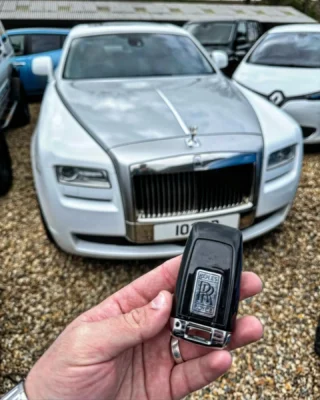In today's modern automobiles, the key fob has become an indispensable component of vehicle entry and ignition systems. The convenience of remote locking, unlocking, and starting a car has made life significantly easier for car owners. However, these key fobs are not immune to wear and tear, and one of the most common issues that drivers face is a malfunctioning or broken button. This article will delve into the intricacies of car key button replacement, providing essential information about the process, costs, and preventive measures.
Understanding the Basics of Key Fobs
Before exploring the replacement process, it's crucial to understand what key fobs are and how they work.
What is a Key Fob?
A key fob is a small, battery-operated device that communicates with a car’s immobilizer system. It uses radio frequency identification (RFID) technology to send signals to the vehicle, enabling functions such as:
- Locking and unlocking doors
- Starting the engine
- Opening the trunk
- Activating the alarm system
Common Issues with Key Fobs
Over time, key fobs can develop a range of issues, including:
- Dead batteries
- Broken buttons
- Physical damage due to drops or exposure to moisture
- Malfunctioning programming
When to Replace Your Key Fob Buttons
It is essential to determine whether the buttons on your key fob can be repaired or need to be completely replaced. Here are some indicators that a button replacement is necessary:
- Inconsistent Functionality: If certain buttons only work intermittently, this may indicate that the internal contacts have degraded.
- Physical Damage: Cracks or breaks in the button casing can affect functionality.
- Battery Replacement Fails: If changing the battery does not resolve the issue, the internal circuitry may be damaged.
DIY Car Key Button Replacement
Replacing car key buttons can often be done at home with a few simple tools and materials. Here’s a step-by-step guide:
Tools and Materials Needed
- Replacement button kit (available online)
- Screwdriver (typically Phillips or Torx)
- Small container for screws
- Tweezers (optional)
- Adhesive (optional)
Step-by-Step Process
- Open the Key Fob: Use a screwdriver to gently pry apart the fob, taking care not to damage the plastic casing.
- Remove the Battery: Note the orientation of the battery before removing it so that you can replace it correctly later.
- Inspect the Buttons: Check the buttons for physical damage. If they are intact, clean the contacts with a soft cloth.
- Replace the Buttons: If you have a replacement button kit, align the new buttons over the existing contacts. Use tweezers for precise placement.
- Reassemble the Key Fob: Place the battery back in its original position and snap the fob casing back together.
- Test the Key Fob: Press the buttons to confirm that they work correctly.
Final Touch
In some cases, adhesive can be applied to secure the new buttons in place. This step is optional but can help ensure longevity.
Professional Key Fob Button Replacement
If the DIY approach seems daunting or if the key fob has extensive damage, seeking professional help is advisable. Here are the options available:
- Automobile Dealerships: They typically offer comprehensive key fob services but may charge higher rates.
- Automotive Locksmiths: A more cost-effective option that can provide key fob replacement and programming services.
- Third-Party Repair Shops: These may offer competitive prices and services not available at dealerships.
Costs Associated with Key Fob Replacement
The costs can vary widely depending on the method of replacement. Here’s a breakdown:
| Method | Estimated Cost (GBP) |
|---|---|
| DIY replacement | £10-£50 |
| Automotive Locksmith | £50-£150 |
| Dealership | £150-£300 |
| Third-Party Repair Shop | £40-£100 |
Preventive Measures for Key Fob Longevity
To maximize the lifespan of your key fob and reduce the likelihood of button problems, consider the following tips:
- Use a Protective Cover: This can safeguard against drops and moisture.
- Avoid Excessive Force: Be gentle when pressing buttons to reduce wear.
- Regular Maintenance: Periodically check the fob for any signs of malfunction or damage.
- Replace Batteries Promptly: A dying battery can put pressure on the internal components, leading to potential damage.
Frequently Asked Questions (FAQs)
1. How can I tell if my key fob battery is dead?
You may notice reduced range when trying to unlock the car, or the key fob may not work at all. If you suspect a dead battery, try replacing it.
2. Can I fix the buttons on my key fob myself?
Yes, if you have the right tools and a replacement button kit, you can follow the steps outlined above to replace the buttons at home.
3. Is it cheaper to replace the key fob or the buttons?
Replacing just the buttons is generally cheaper than purchasing a new key fob, especially if the electronic components are still functioning.
4. How long do key fob batteries usually last?
Most key fob batteries last between 2 to 4 years, depending on usage and environmental factors.

5. What should I do if my key fob stops working entirely?
If the key fob does not respond after battery replacement, it may require professional diagnosis and repair.
In conclusion, car key button replacement is a manageable task for many car owners, but professional assistance is readily available for those who prefer to err on the side of caution. Understanding the functioning of key fobs, recognizing when replacement is necessary, and taking preventive measures can greatly enhance the longevity of this essential automotive accessory.







